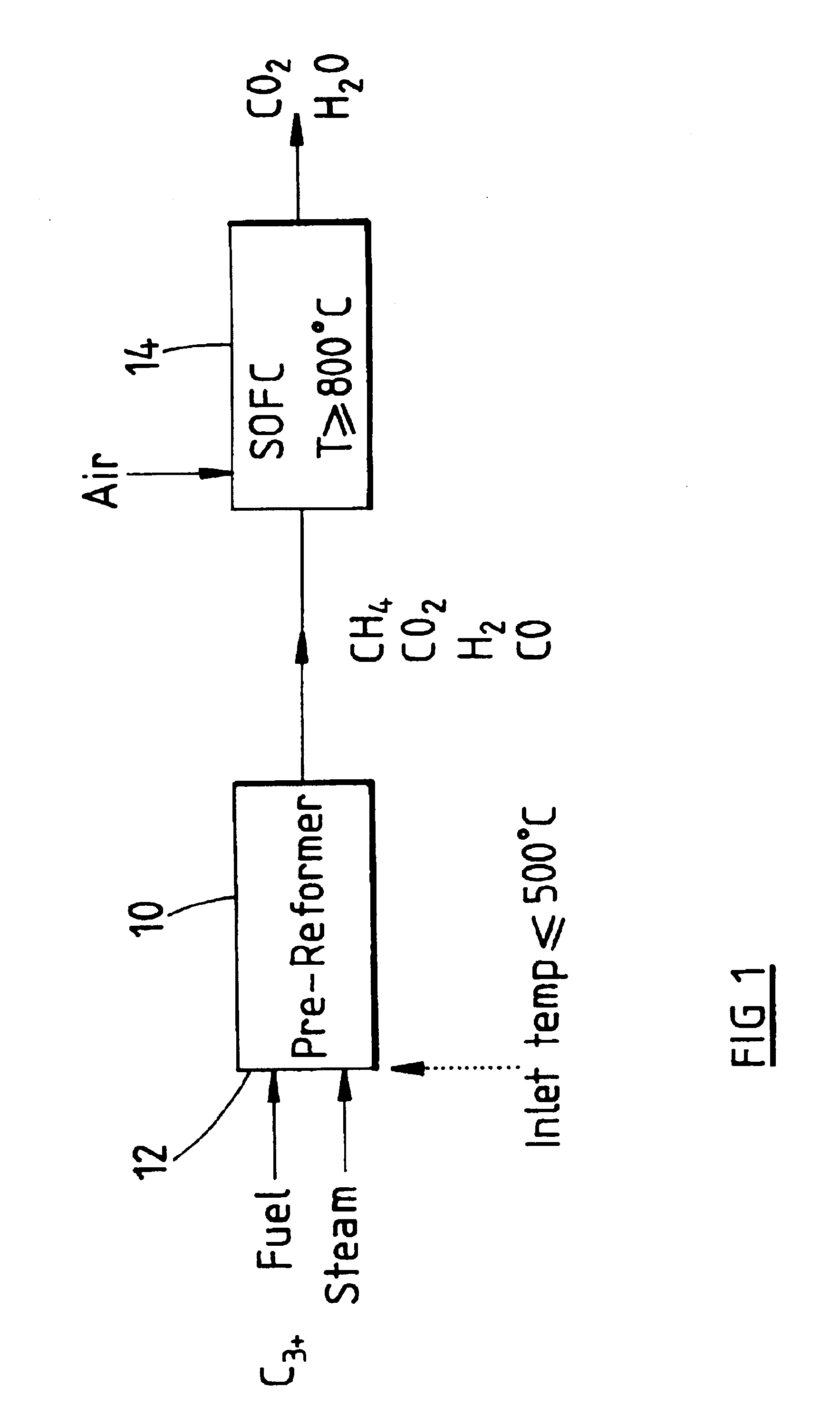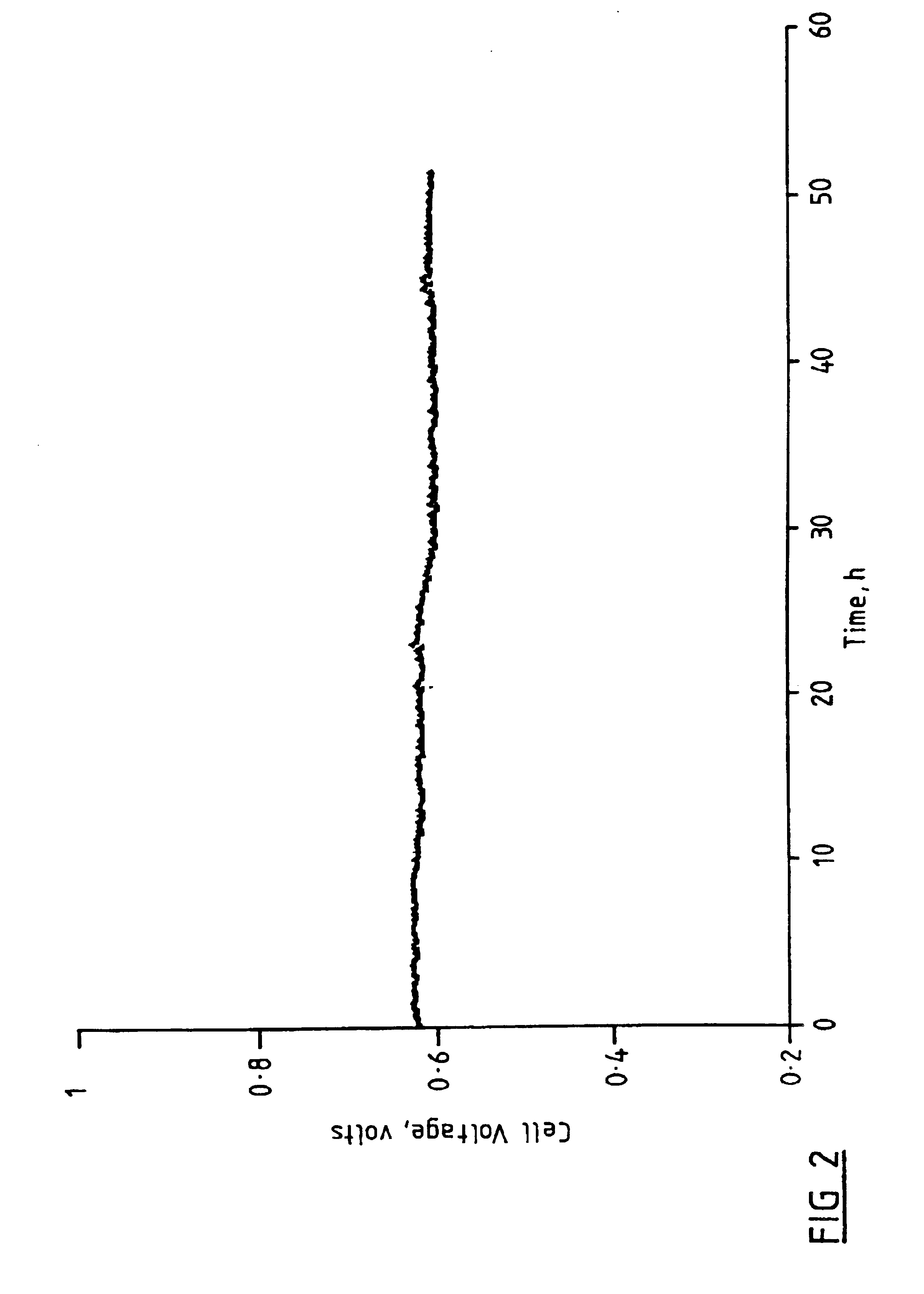Fuel cell system
- Summary
- Abstract
- Description
- Claims
- Application Information
AI Technical Summary
Benefits of technology
Problems solved by technology
Method used
Image
Examples
example 1
Using a steam pre-reforming process to produce high levels of methane, propane was subjected to steam reforming using a commercially available catalyst at two different maximum temperatures of 378° C. and 328° C. and at a variety of S / C ratios. The catalyst was a nickel-based pre-reformer catalyst C11-PR supplied by United Catalysts Corporation. The measured conversions given in Table 3 illustrate that the results predicted by the thermodynamic calculations given above can be at least approached. The steam reforming was conducted adiabatically in a microreactor system with on-line analysis of the gas compositions. It is to be noted that the experimental set-up was not ideal, and it is believed that this accounts for the incomplete conversions. All conversions would usually be expected to be at least 97.5% complete with appropriate residence times over the catalyst to ensure this. All percentages are vol % and are given on a dry basis.
TABLE 3Steam / Steam / Con-TempCarbonGasH2COCH4CO2C3H...
examples 2-4
Further experiments were conducted on the production of a methane-rich fuel for internal reforming on SOFC anodes from LPG available in Victoria, Australia (“Victorian LPG”) in a prototype steam pre-reformer. The composition of Victorian LPG varies from 100% propane to a mix of propane, butane and / or ethane. The composition of the LPG used during this work was 93% propane and 7% ethane.
The experiments were carried out in a prototype fuel processor with 0.6L of the aforementioned commercial pre-reforming catalyst C11-PR. Operating conditions were chosen to have higher methane content in the reformed gas than is normally generated from conventional pre-reforming of propane and ethane, with a sufficient residence time over the catalyst to give 100% conversion of the propane and ethane. The results of the experiments are given below, together with the operating conditions. It should be noted that the results are given on a dry basis.
example 2
Temp: 353-380° C., Steam / Carbon=1.5.
CH4: 48.3H2: 30.6CO2: 21.1CO: 0.0C3H8: 0.0C2H6: 0.0
PUM
 Login to View More
Login to View More Abstract
Description
Claims
Application Information
 Login to View More
Login to View More - R&D
- Intellectual Property
- Life Sciences
- Materials
- Tech Scout
- Unparalleled Data Quality
- Higher Quality Content
- 60% Fewer Hallucinations
Browse by: Latest US Patents, China's latest patents, Technical Efficacy Thesaurus, Application Domain, Technology Topic, Popular Technical Reports.
© 2025 PatSnap. All rights reserved.Legal|Privacy policy|Modern Slavery Act Transparency Statement|Sitemap|About US| Contact US: help@patsnap.com



